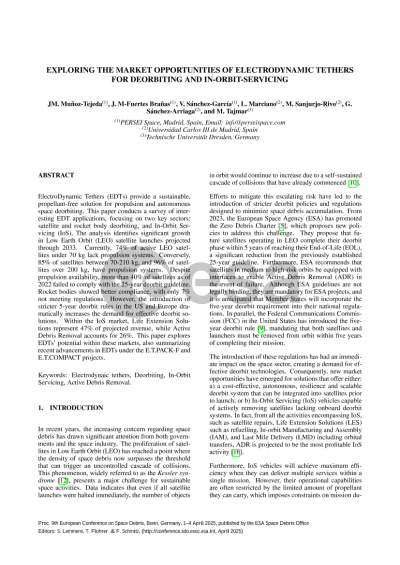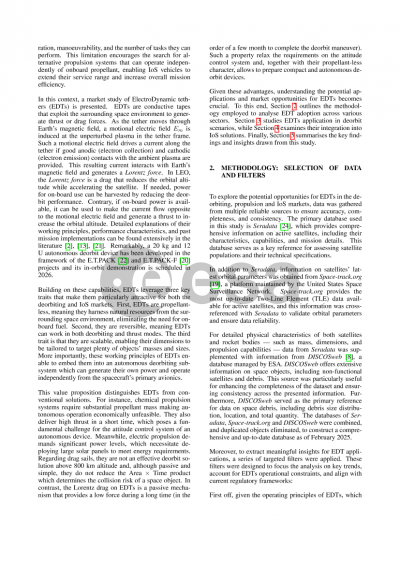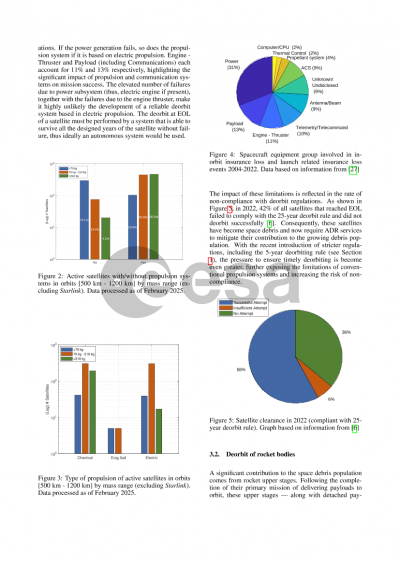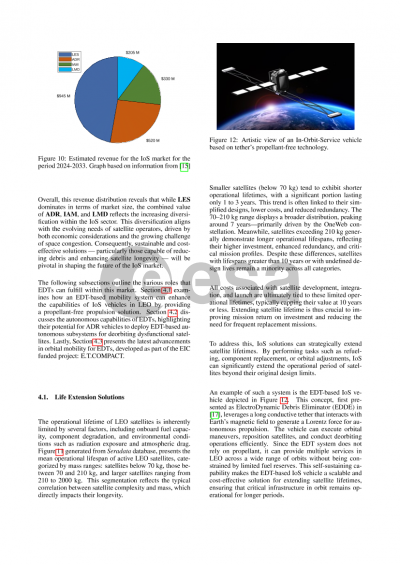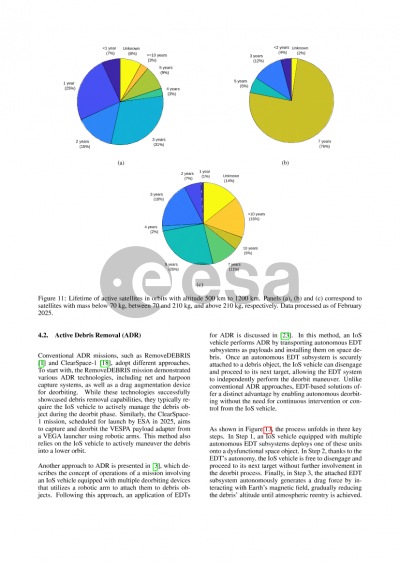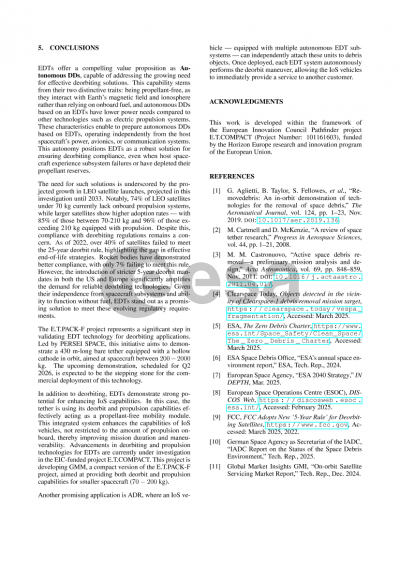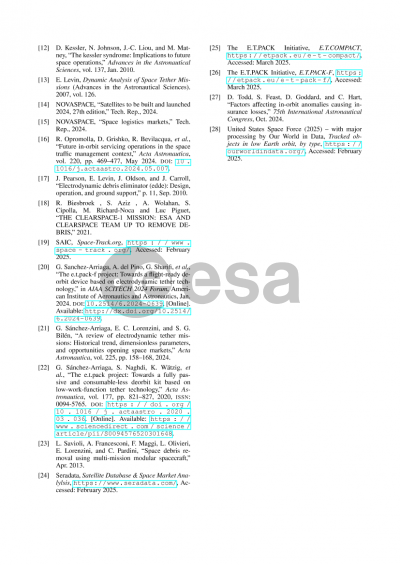Document details

Abstract
ElectroDynamic Tethers (EDTs) present a promising solution for sustainable space mobility operations, providing both deorbiting (drag) and propulsion (thrust) capabilities without requiring onboard propellant. In this paper, a detailed market analysis of EDT applications for both: 1) satellite end-of-life disposal and 2) upper rocket stage deorbiting is addressed; meeting the increasing demand for effective space debris mitigation systems in response to stringent new US regulations and European policies.
This study analyses key market parameters, including orbit altitude, inclination, and object mass, to assess the potential demand for EDTs across various orbital segments. The analysis covers Low Earth Orbit satellites, including past, present and future projections, which are estimated to exceed 20,000 units by 2030 (mainly driven by mega constellations and a rapid increase in space activities). The paper also examines the application of EDTs on the upper stages of rockets, which contribute significantly to the space debris population due to their extended orbital lifetimes after payload deployment if no propulsion system is onboard.
The regulatory environment, which includes the Federal Communications Commission’s 5-year deorbit rule and the new policies of the European Space Agency’s Zero Debris Charter, creates a strong market incentive for scalable, low-cost deorbit solutions. EDTs offer a simple, cost-effective and competitive advantage by optimizing the Area x Time product for deorbiting, providing an optimal solution for end-of-life disposal decreasing the collision risk.
This market study will serve as a foundation for the commercialization strategy of EDTs and other potential products addressing the current and future needs of the space sector ecosystem.
Preview
